 Your new post is loading...
 Your new post is loading...

|
Scooped by
nrip
|
A survey conducted by Nielsen on behalf of the Council of Accountable Physician Practices (CAPP) finds that, at most, 52 percent of primary care physicians have recommended that their patients use an mHealth app or device to track their health. Yet only 4 percent to 5 percent of consumers surveyed say their PCP has made such a recommendation This means that either physicians are making the effort but their patients are ignoring the advice, or patients are looking for that guidance but it isn’t coming from their doctors. the survey reached a familiar conclusion in how each generation perceives mHealth and telehealth. It found that consumers rarely use video visits (only 5 percent total), but those age 34 and younger are twice as likely to use and want them than those age 65 and older. The same discrepancy was seen in the use of text reminders for medication and health measurements and online scheduling tools. more at : http://mhealthintelligence.com/news/do-doctors-patients-take-mhealth-seriously

|
Scooped by
nrip
|
Background: Mobile text messages are a widely recognized communication method in societies, as the global penetration of the technology approaches 100% worldwide. Systematic knowledge is still lacking on how the mobile telephone text messaging (short message service, SMS) has been used in health care services.
Objective: This study aims to review the literature on the use of mobile phone text message reminders in health care.
Conclusions: We can conclude that although SMS reminders are used with different patient groups in health care, SMS is less systematically studied with randomized controlled trial study design. Although the amount of evidence for SMS application recommendations is still limited, having 77% (46/60) of the studies showing improved outcomes may indicate its use in health care settings. However, more well-conducted SMS studies are still needed.

|
Scooped by
nrip
|
As the number of self-tracking health and fitness tools available to consumers continues to climb, a persistent question has been whether the data they collect might be useful to health researchers. Along with that: Are people who self-track comfortable sharing their data with researchers?
A new, must-read report from San Diego’s California Institute for Telecommunications and Information Technology (Calit2), funded by the Robert Wood Johnson Foundation, explores these and other questions.
Based on a survey with hundreds of self-trackers, a majority — 57 percent — said one critical assurance they would need before agreeing to make their self-tracked, personal health data available to researchers was that their privacy would be protected. More than 90 percent also said it was important that their data remained anonymous. Respondents said they’d be more comfortable sharing data if they knew it was only going to be used for “public good” research.
One open-ended survey that the report’s researchers posed to self-trackers found that 13 percent of respondents specifically mentioned an aversion to commercial or profit-making use of their data, according to the report. One respondent wrote: “It depends who gets it. Research using these data will be instrumental in the future of personal predictive services, but also for that reason are likely to be exploited by marketers and the politically short-sighted. Thus I would like transparency for who has access to my data.”
Among the almost 100 health researchers interviewed for the report, 46 percent said that they had already used self-tracking data in their research previously. Some 23 percent reported that they had already worked with digital health companies that offer apps or devices to consumers to track their health.
Overall, the researchers interviewed for the report were “generally enthusiastic” about the prospect of using self-tracking data in the future — 89 percent agreed or strongly agreed that such data would prove useful to their research efforts. Almost all of those researchers surveyed said that kind of data could answer questions that other data could not.
more at http://mobihealthnews.com/30979/health-researchers-see-unique-opportunity-in-self-tracker-data/

|
Scooped by
nrip
|
Smart devices such as smartphones and tablet PCs have become an integral part of everyday life as well as for professional applications. This is also true for medicine .
To enhance patient safety for medical apps or health apps that are to be used successfully in today’s medical settings, a good information policy should always be part of the marketing strategy. Patients and doctors that are well informed about the benefits, limits, and risks of an app are in a better position to give more reasoning to their decisions whether they want to use it in a medical context or not.
To address the current shortcomings concerning the way information about apps is provided to potential users of apps, Lewis, in a recent letter to JMIR, proposed a set of standard criteria analogous to those published by the Health on the Net foundation to be used for assessing the utility of medical apps based on a systematic self-certification model.
He suggested using a central platform for this purpose, for example, the United Kingdom National Health Service App Store, to allow registered developers of mobile medical apps to highlight the fact that they conform to these criteria. This would probably also give developers and distributors of such apps an advantage over their competitors.
There are already a number of existing initiatives and projects that use almost identical criteria to those suggested by Lewis, for example, the “Apps Peer-Review” by the Journal of Medical Internet Research (JMIR) launched in 2013. The JMIR mHealth disclosure form also covers many of the concerns mentioned in the proposed app synopsis.
Mostly, these projects reach this goal by installing certification and/or (third party) review processes and publishing the corresponding evaluation results using specific channels (eg, their own webpage or scientific journals).
The app synopsis could be seen as a “first level” approach according to criteria already specified by previous projects dealing with quality assurance for Web-based information sources, though its focus is slightly different. At first, it could serve to provide all interested parties with sufficient information that, in addition to providing customers with basic information about an app, can then also be used as a starting point for building tests (eg, to identify the appropriate reviewers and testing methods, independent of the business model or revenue strategy that is employed by each respective initiative).
The current market players come from different backgrounds and thus also have different interests in mind. In Germany, for example, there are some initiatives focusing mainly on a single disease while others target health apps in general. Also, their funding strategies differ significantly, ranging from privately funded initiatives or publicly financed institutions to companies that are being paid on a case-by-case basis.
If manufacturers were to publish the necessary information following this app synopsis, both they as well as the users would clearly benefit. Users would receive a complete and easily comprehensible set of information that would support them in their decision making process while manufacturers would be able to follow the simple structure of the synopsis to compile the necessary information without expending too much effort since they only have to compile information that should already be available to them.
Although this is not equivalent to an officially sanctioned certification process, information published according to the synopsis could nevertheless serve as a reference if there are any disputes between both sides.
more at http://www.jmir.org/2013/12/e277/

|
Scooped by
nrip
|
If 2013 was the year of wearables and health apps, what’s on tap for 2014?
Here are five exciting health tech trends to keep an eye on for the new year.
1. Data in the Doctor’s Office According to Pew Research, 21% of Americans already use some form of technology to track their health data, and as the market for wearable devices and health apps grows, so too will the mountain of data about our behaviors and vitals. Next year, we may see more of this data incorporated into our day-to-day medical care.2. Smart Clothes If a wristband or clip-on tracker isn’t part of your look, there’s hope for you in 2014, because a new wave of wearable smart garments will be hitting the stores next year. In fact, market research company Markets and Markets expects sales of smart clothes and fabrics to reach $2.03 billion by 2018.
3. Augmented Nutrition Of course, if you want to fit into the latest smart fashion, you might need to keep better tabs on what you’re eating. We’ve already seen popular apps such as Fooducate make things easy by letting you scan the barcodes on packaged foods to gather nutrition data. In 2014, we’ll see new technologies that take even more of the guesswork out of counting calories.4. Virtual House Calls Virtual house calls also just got a big boost with the recent launch of Google Helpouts, a new marketplace for getting personalized help over live video chat. Although it’s still early days for the new service, you can already browse the Google Helpouts Health marketplace for medical advice, mental health issues, nutrition counseling, weight loss and more. You can even get wellness advice for your pets.
5. Health Rewards If looking and feeling good isn’t enough of a payoff, how about getting paid for getting healthy?
|

|
Scooped by
nrip
|
New patient engagement trends from TechnologyAdvice Research reveals digital engagement is a growing factor in how patients choose healthcare providers.
Quality of care has long been a primary factor in choosing a healthcare provider, but convenience and communication are also becoming key considerations for patients. Still, many physicians do not appear to be offering the digital engagement services that can meet those demands.
According to a new nationwide survey conducted by TechnologyAdvice Research, a majority of patients (60.8 percent) said digital services like online appointment scheduling and online bill pay are either “important” or “somewhat important” when choosing a physician. However, when asked what services their current physician provides, less than one-third of patients indicated they have access to either online bill pay, online appointment scheduling, or the ability to view test results and diagnoses online, which are the top three services that patients report wanting the most.
“Primary care physicians are reporting some of the highest rates of EHR adoption to comply with government regulations and to receive incentives from Meaningful Use, but a significantly lower number of patients claim to have access to these patient portal services,” said TechnologyAdvice Managing Editor Cameron Graham, who authored the survey. “The issue here may not be implementation of digital services, but instead a lack of patient awareness. If physicians are offering these in-demand digital services, a more proactive approach to promoting them is needed and could create an advantage in attracting and retaining patients.”
TAKEAWAYS
- If providers wish to gain an upper edge in attracting new patients (especially younger ones), and in retaining their existing patients, they should invest in a fully featured patient portal system. For many primary care physicians this should not be difficult. Most comprehensive EHRs include patient portal features, and dedicated patient portal vendors are making strides in integrating with third-party systems. In particular, prioritizing systems with intuitive online appointment scheduling, online bill pay functionality, and online test results could provide a significant draw for new patients.
- For practices that already have patient portal systems, they should dedicate resources to making sure their patient populations are informed of the existence of such services. They should also consider prominently featuring these services in their advertising and on their websites. When orienting new patients to their practice, providers need to have a plan for walking patients through the initial portal set-up requirements and making sure they understand the features available to them.
-For particularly tech-savvy practices, a dedicated smartphone app could help set them apart, and attract younger individuals.
more at http://hitconsultant.net/2015/01/16/should-physicians-tailor-patient-engagement-based-on-age/

|
Scooped by
nrip
|
The Food and Drug Administration (FDA), which regulates everything from heart monitors to horse vaccines, will soon have its hands full with consumer health apps and devices.
The vast majority of the health apps you’ll find in Apple’s or Google’s app stores are harmless, like step counters and heart beat monitors. They’re non-clinical, non-actionable, and informational or motivational in nature.
But the next wave of biometric devices and apps might go further, measuring things like real-time blood pressure, blood glucose, and oxygen levels. More clinical apps The FDA is charged with keeping watch on the safety and efficacy of consumer health products. Lately, that includes more clinical apps as well as devices you might buy at the drugstore, like a home glucose testing kit.
“It’s these apps that the FDA says it will regulate,” David Bates of Brigham and Women’s Hospital and Physicians Organization told VentureBeat in June. These apps will have to go through the full 510(k) process,” he said.
Dr. Bates chaired a group to advise the FDA on how to review health apps for approval, and on how the FDA should advise developers. “It was intended to help them think through the risk factors involved with these products and then give guidance on how to stay within the guidelines,” he said.
“The device makers were asking from some guidance from The FDA on what types of things would be accepted and what wouldn’t,” Bates said. Bates believes the FDA wants to use a light regulatory touch when looking at new medical devices. “The FDA definitely wants innovation to continue in clinical devices,” he said. “In general the FDA knows that the vast majority of apps are just informational.”
The FDA’s final guidance focuses on a small subset of mobile apps that present a greater risk to patients if they do not work as intended.
Health apps go mainstream The big software companies (Apple, Google, and Samsung) have brought attention to, and lent credibility to, apps and devices that do more than count steps. These companies are building large cloud platforms designed to collect health data from all sorts of health apps and devices.
more at http://venturebeat.com/2014/07/21/health-apps-are-changing-so-must-the-fda/

|
Scooped by
nrip
|
This year, when patients throughout the United States begin downloading the world’s first doctor-prescribed smartphone app, mobile health care will finally get what big-time medicine most requires: a way to get insurance companies to pay for it.
The app, called BlueStar, helps people with Type 2 diabetes (the most common kind) by suggesting, in real time, when to test their blood sugar and how to control it by varying medication, food, and exercise. That it requires a physician’s prescription is actually an advantage, because it means insurance companies will reimburse BlueStar’s fee.
“This is a piece of software getting the same treatment as a medical device,” says Sonny Vu, cofounder of Misfit Wearables in San Francisco, a maker of wearable computing devices. “It’s pretty world-changing.”
The U.S. Food and Drug Administration cleared BlueStar for market in 2010, in line with its recent determination to regulate devices that provide a diagnosis or recommend a treatment, not those that simply track activity, like calories consumed or steps taken. The success that WellDoc, the app’s manufacturer, has had with the FDA may inspire other mobile health companies to go the regulatory route. “It gives us hope that you can pull something like this off,” says Vu. The European Commission has also issued guidance on regulations for mobile health apps, but countries such as China and India have not.
The app addresses one of the toughest tasks a physician has: changing patient behavior.
Doctors ask diabetic patients to keep a daily record of glucose readings, food, exercise, and medications. If managed well, these factors keep patients’ blood sugar in a safe range, reducing their risk of complications from the disease. But only 15 to 20 percent of patients actually keep a log, says Philis-Tsimikas.
Diabetes apps that make activity tracking easier are available, but their effectiveness is limited. “No one does it, because you have to wait 90 days before you get feedback [at your next doctor visit],”
There are lots of medical apps available for smart phones and tablets, many of which are free or inexpensive. But how do you incorporate them into clinical practice?
The good news is you don’t have to invest in fancy equipment. If you’re asking about apps, you probably own a smart phone or tablet. Your patients who will benefit most from apps own the technology already, too. So the most efficient and effective way to start is to use the technology you have, and have learners use what they have.
Next step is to find the most appropriate resources. Do not start from “what apps are available?” That would not be patient-centered. Instead, ask: What conditions do my patients have? What do I teach about? What do my patients and their families need to learn? What questions do they have? What behaviors do they need help changing to optimize health?
There are 3 places apps might be used:
1. In the clinical encounter, as you explain something.
2. During a hospitalization, to engage the patient and family in the educational process.
3. At home, to provide information and support healthy behavior changes.
Read more: http://notimetoteach.com/2013/using-apps-to-enhance-patient-and-family-education/
Via Parag Vora

|
Scooped by
nrip
|
New health-care smartphone apps for doctors and patients help with everything from diagnostics and monitoring to revealing who isn't washing their hands.
Mobile apps for smartphones and tablets are changing the way doctors and patients approach health care. Many are designed for the doctors themselves, ranging from handy databases about drugs and diseases to sophisticated monitors that read a person's blood pressure, glucose levels or asthma symptoms. Others are for the patients—at their doctor's recommendation—to gather diagnostic data, for example, or simply to help coordinate care, giving patients an easy way to keep track of their conditions and treatments.
Doctors say many of the apps are useful time savers, and have the potential to make health care more efficient by speeding diagnosis, improving patient monitoring and reducing unnecessary visits to a physician or hospital. Still, the field has a way to go, doctors add, particularly when it comes to making good use of all the patient data being generated. Here are some of the apps doctors are talking about most. Some are free; others cost several hundred dollars for a year's subscription. Those that combine an app and a wireless monitor cost from $80 to $200.
EPOCRATES One of the oldest and most established medical apps, Epocrates gives doctors basic information about drugs, the right dosing for adults and children, and warnings about harmful interactions. It has replaced many a copy of the Physician's Desk Reference.
UPTODATE This app provides reference material doctors can consult when making treatment decisions. David Bates, an internist at Brigham and Women's Hospital in Boston, says he has used it recently to look up treatment approaches for patients who have failed to respond to existing hypertension therapies, and for information on the drug combinations needed to treat a bacterial infection called H. pylori.
ISABEL Every doctor needs help reaching diagnoses. Here, doctors enter symptoms, and the app lists possible diagnoses as well as medications that could cause the symptoms. ALIVECOR This portable heart monitor and app—one of the programs that opened Dr. Topol's eyes—runs on a patient's smartphone to produce electrocardiograms. Patients place their fingers over the monitor's sensors, which wirelessly communicate with the phone to produce the EKG.
RESOLUTIONMD Doctors can look at X-rays and other images on a smartphone or tablet when they use this app. Some doctors say the app is handy for viewing images as soon as they're available, no matter where the doctor happens to be.
ISCRUB This infection-control app collects and rapidly displays data on whether hospital staff are being scrupulous about washing their hands. Most hospitals have unofficial observers of whether doctors, nurses and other staff are following hand-hygiene guidelines. Many are not.
BREAST CANCER DIAGNOSIS GUIDE Using this app, breast-cancer patients enter and track details of their disease and treatment, from the size of the tumor to the presence or absence of estrogen receptors.
CLINICAM Increasingly, doctors are using their phones to take photos of a patient's condition—such as a rash or wound—and to upload the images to the patient's electronic medical record. One problem: That could violate health-care privacy laws if the doctor leaves the photo on his or her personal phone.
more at the original: http://online.wsj.com/news/articles/SB10001424052702303376904579137683810827104
|



 Your new post is loading...
Your new post is loading...



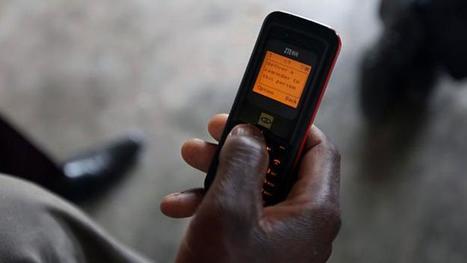
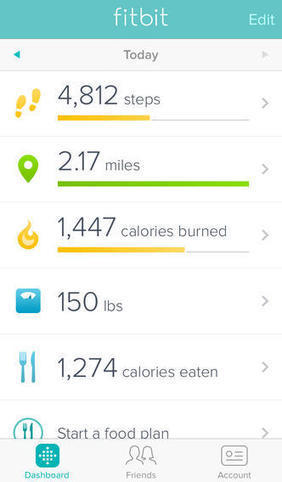
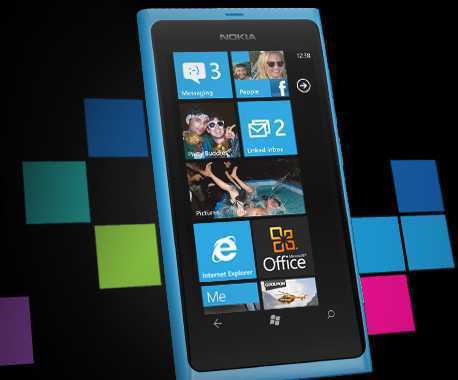






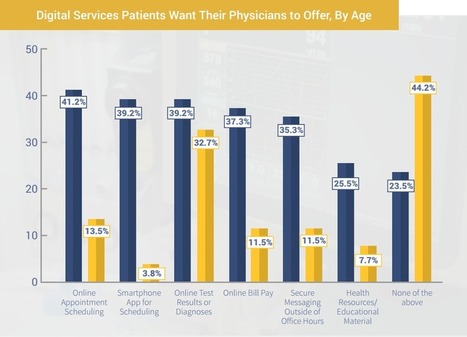
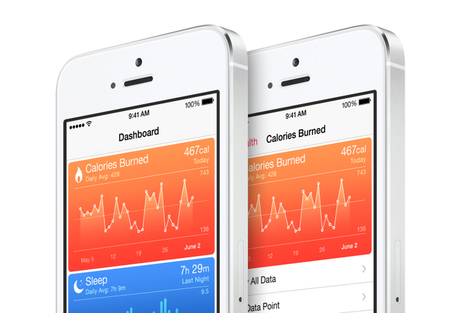
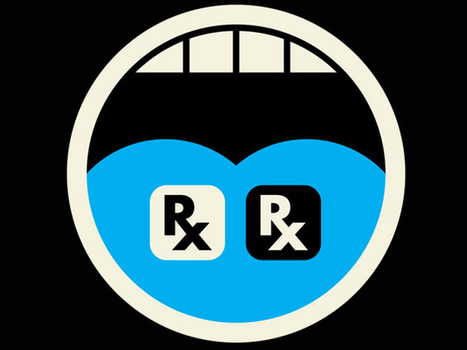
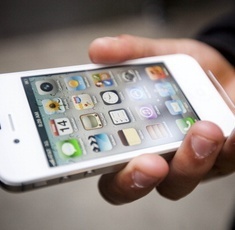
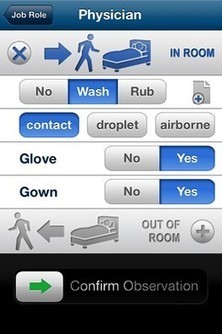





Someone's not being truthful :)
Related articles: “AMA Survey Finds That Many Physicians Are Enthusiastic About Digital Health Tools, But Few Currently Use Them”; http://sco.lt/8b9r97 and “Do Patients Rely on Mobile Healthcare Apps More Than Their Doctors?”; http://sco.lt/5HSTrN